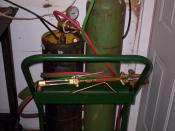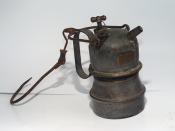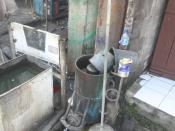Physical Properties of Acetylene Property Acetylene Appearance colorless Odor ethereal Physical state at atmospheric conditions gas pH N/A Vapor Pressure (at 21.1 deg. C (70 deg. F)) 44.5 bar (645 psia) Vapor Density 1.1747 g/L Boiling point N/A Melting point sublimes at -84 deg. C (-119.2 deg. F) Solubility in water (v/v, at 25 deg. C) 0.94 Specific gravity (liquid) N/A Molecular weight 26.04 H C C H Chemical Properties Chemical Stability: Acetylene is stable at room temperature and pressure. At pressures above 2 bar (30 psia), acetylene decomposes spontaneously and violently to carbon and hydrogen.
Conditions to Avoid: Sources of ignition, exposure to air.
Incompatibility with Other Materials: Oxidizers, halogens and some halogen compounds, active metals (e.g., copper (including some brasses), silver and mercury).
Hazardous Decomposition, Reaction and Oxidation (other than burning) Products: Hydrogen, carbon monoxide.
Hazardous Polymerization: Has not been observed.
How acetylene is made Calcium carbide is made by reacting limestone, coke and coal, which is then subsequently reacted with water to produce acetylene.
Acetylene gas can be manufactured in a laboratory and commercially by adding solid calcium carbide to water, when made commercially large acetylene generators are used.. The products are acetylene gas and aqueous calcium hydroxide. The reaction is shown by: CaC2(s) + 2H2O(l) ---> Ca(OH)2(aq) + C2H2(g) Acetylene's significance to humans Acetylene gas is a very significant gas to humans. Acetylene is becoming an important material used in solar panels. It is an extremely hot burning and very flammable gas, therefore ideal for such applications as welding. A very common use for acetylene gas is in the Oxy-Acetylene welding torch, in which 2 separate tanks of Oxygen and Acetylene are mixed in the torch and lit. This can then be used in a variety of applications such as Silver soldering, Braising and Cutting. The reactions that occurs when using an Oxy-Acetylene torch are as follows: Stage 1 Acetylene + Oxygen = Carbon Monoxide + Hydrogen C2H2 + O2 = 2CO + H2 Stage 2 Carbon Monoxide + Hydrogen + Oxygen = Carbon Dioxide + Water CO + H2 + O2 = CO2 + H2O These reactions result in a flame which is approximately 32000ðC



